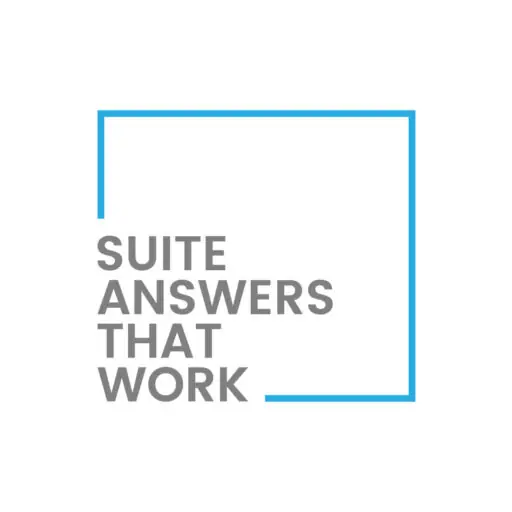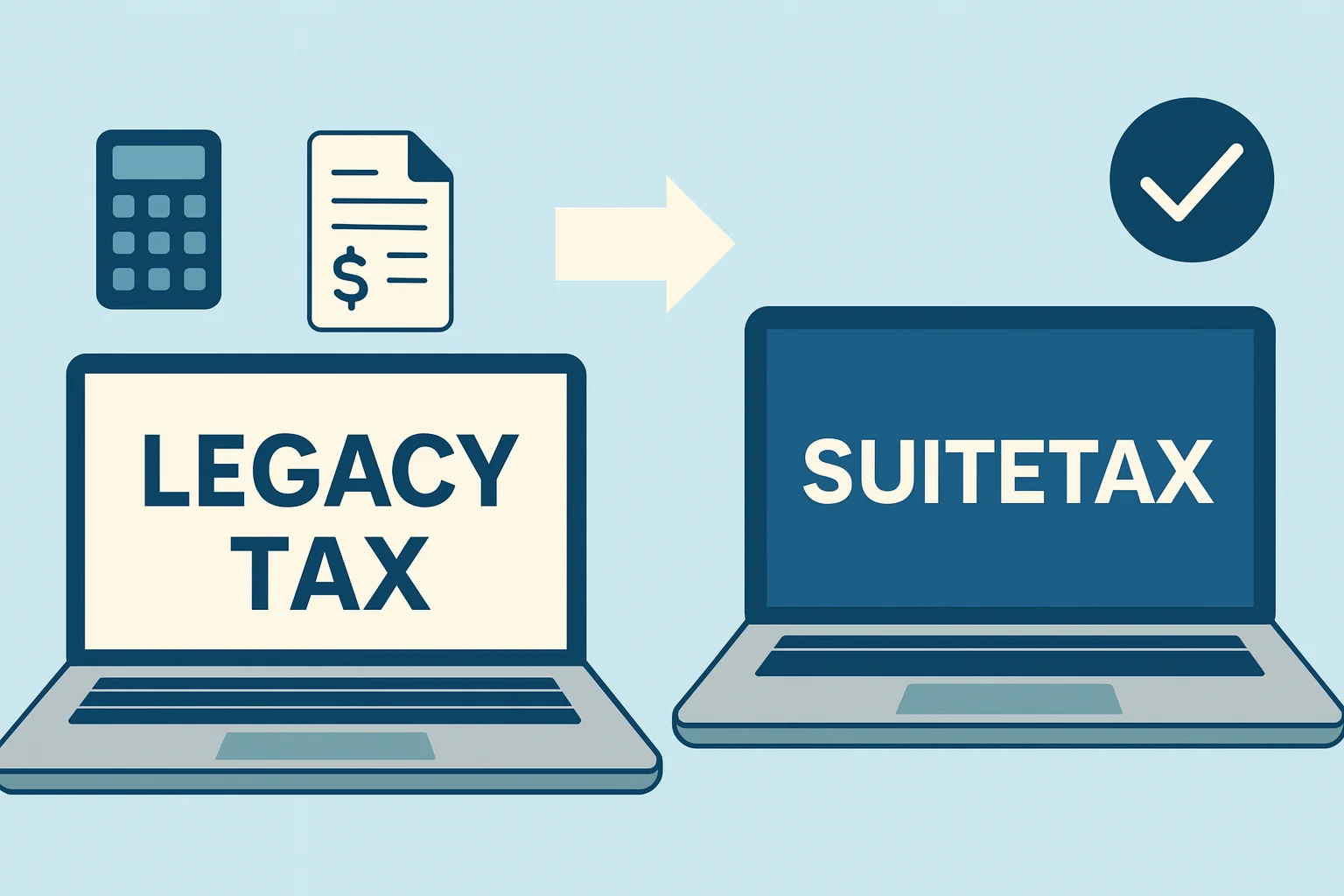SuiteTax: The Next Step in NetSuite Tax Modernization
If your business has expanded in complexity since your initial NetSuite implementation, you’ve probably started hearing more about SuiteTax, NetSuite’s next-generation cloud tax engine. As organizations continue to pursue ERP modernization and digital transformation, they face increasing pressure to achieve automated global tax compliance and real-time tax calculations.
From Static Rules to Dynamic Control
The Legacy Tax engine still supports multiple jurisdictions; however, it relies on a static ruleset built for simpler tax environments. In contrast, SuiteTax introduces a modern, dynamic framework that delivers multi-jurisdictional compliance, automated updates, and fine-grained control over tax configurations. This transition empowers finance teams to strengthen regulatory agility and scale efficiently as their business grows.
Implementing SuiteTax the Right Way
You can’t simply toggle SuiteTax on and check the ‘install SuiteTax’ button. Instead, you must install and configure it in parallel with the Legacy Tax engine, ideally starting in a sandbox environment. After you validate your setup and perform a successful production cutover, the migration becomes permanent. Therefore, strategic planning, accurate data validation, and thorough testing are essential for success.
How it Looks on a Transaction: Tax Fields and Data
When users start working in SuiteTax, they immediately notice changes in how transactions display tax data.
| Aspect | Legacy Tax | SuiteTax |
| Transaction Forms | Tax fields appear directly at the line level. For transactions with many lines, tax information clutters the item view. | A dedicated Tax Details tab consolidates all tax information in one place for the entire transaction. |
| Line Visibility | Each line shows its tax rate and code directly. | Item lines contain only a Tax Details Reference link, pointing to the corresponding row in the Tax Details tab for cleaner review. |
Tax Configuration and Administration: A Shift in Approach
For NetSuite administrators and finance teams, SuiteTax changes how they configure and maintain tax settings.
| Aspect | Legacy Tax | SuiteTax |
| Exemptions | Exemptions are applied at the customer level, limiting flexibility. | Exemptions can be defined at the customer + item level for granular control. |
| Tax Registrations | Supports only one tax registration per entity. | Supports multiple tax registrations per customer, vendor, or subsidiary; essential for multi-region compliance. |
| Setup & Maintenance | Manual maintenance of tax codes and schedules; error-prone for changing rates. | Uses the SuiteTax Engine (separate SuiteApp). Where supported, rate updates can be automated; for U.S. use cases, partner tax engines like Avalara or Sovos may still be required. |
| Permissions | Controlled through standard roles. | Introduces a dedicated Tax Engine role with tighter administrative controls. |
Reporting: Moving from Static to Dynamic
SuiteTax significantly enhances reporting capabilities, delivering more automation and customization options.
| Aspect | Legacy Tax | SuiteTax |
| Reporting Output | Basic native reporting; manual work required for multi-jurisdiction scenarios. | Built on the Tax Reporting Framework (separate SuiteApp), providing preconfigured, jurisdiction-ready reporting. |
| Data Point | Based solely on the transaction date. | Introduces Tax Point Date, which reflects the jurisdiction’s reporting rules (e.g., by payment, shipment, or invoice timing). |
| Filing Support | Often requires manual steps or add-on bundles. | Integrates with partner engines for automated VAT, GST, and sales tax filings. |
Who You Might Consider Delaying Migration (For Now)
Not every NetSuite account is ready for SuiteTax. Migration may be premature if:
- You rely on custom tax scripts referencing line-level fields no longer present with SuiteTax.
- You use U.S. tax logic without Avalara/Sovos/CCH or another partner engine.
- Existing SuitePromotions/discount logic is tied to legacy tax rate calculations.
- You operate complex intercompany tax flows not yet modeled in SuiteTax.
Impact on Saved Searches, Scripts, and Integrations
After enabling SuiteTax, you’ll need to update several configurations:
- Line-level taxcode and taxrate values must be retrieved from the Tax Details subrecord.
- Map/Reduce, RESTlet, and Client scripts validating taxes must be modified to read from Tax Details.
- CSV imports mapping tax codes at the item line may require revised handling.
Sandbox Cutover Sequence (Recommended)
Follow these steps for a smooth transition:
- Install SuiteTax and SuiteTax Engine SuiteApps in the sandbox.
- Install the Tax Reporting Framework (if jurisdictional reporting is required).
- Configure tax registrations and exemptions per subsidiary/jurisdiction.
- Validate sample transactions and all tax-dependent scripts/searches.
- Run a parallel dry-run period for reporting/filing validation.
- Cut over to production after sign-off, understanding the change is permanent.
Making the Decision: When to Switch
SuiteTax is becoming the long-term tax architecture for NetSuite, though Legacy Tax is not yet formally deprecated. You should consider switching when:
- International Expansion is a Priority: Multi-jurisdictional compliance becomes dramatically easier under SuiteTax.
- Manual Tax Maintenance is a Burden: Automation reduces maintenance time, risk, and filing errors.
- You Need Granular Control: Item-level exemptions and multiple tax registrations per entity are native in SuiteTax.
What to consider before the switch:
- Impact on Existing Functionality: Certain bundles or customizations tied to Legacy Tax may need to be removed or reworked.
- Permanent Change: Once SuiteTax is live in production, rollback is NOT possible.
- Partner Dependencies: U.S. sales tax often still needs Avalara, Sovos, or equivalent engines for automation.
Conclusion
SuiteTax isn’t just a feature upgrade; it’s a comprehensive modernization of tax technology within NetSuite’s cloud ERP ecosystem. It represents a strategic step toward digital transformation, enabling real-time tax compliance, automated reporting, and greater regulatory adaptability across global operations.
By understanding the differences in architecture, configuration, and compliance reporting, along with key readiness and migration considerations, your organization can align SuiteTax implementation with broader goals of ERP modernization, compliance intelligence, and data-driven decision-making. With the right planning, you’ll ensure a smooth transition and position your business for future-ready tax automation and scalable financial operations.
About Us
We are a NetSuite Solutions Provider with 30+ years of combined experience. We specialize in implementation, optimization, integration, rapid project recovery and rescue as well as custom development to meet any business need. Although every business is unique, with 40+ NetSuite clients over the last 5+ years our NetSuite Consultants have most likely seen your challenge or created a similar solution. If you would like more information on NetSuite or just have questions on your project, feel free to contact us Here.

